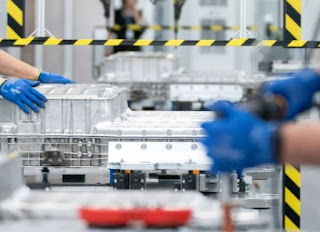Future of eCommerce Platform in the Real estate sector
Ecommerce has changed the face of many businesses in its way like clothing, fashion, consumer goods such as electronics, mobiles and video cameras. But what has caught the eye of many business owners today is how ecommerce is slowly but definitely changing the face of one of the biggest industries in the world.
Trend is both an opportunity and threat. Depending on which side of the coin you are, it will either benefit you or you will be victim of the new sunrise Industry. The E-commerce industry is witnessing never ending inflow of funds inspite of the fact that they continue to incur losses much beyond their net worth. The e-commerce business is impacting real estate industry differently in many ways. When it comes to housing market, the higher than average salary including encashment of stock options is fuelling either purchase or renting of houses.
Many retailers are repurposing their existing real estate by finding new uses for their stores, such as distribution centers that can enhance store productivity and shorten delivery times. With initiatives such as buy online/pick up in store or shipping products directly from stores, retailers can significantly shorten delivery times compared to shipping from a traditional distribution center because existing stores are generally located closer to consumers. As growth in same-store sales (sales at stores open a year or more) decelerates and store productivity declines, retailers are leveraging their existing real estate to compete against pure e-commerce retailers such as Amazon and Ebay and reallocating resources across channels to capture a sale no matter where the consumer shops. An omni-channel customer is more valuable to a retailer because of the potential for increased sales frequency and transaction size. Plus, the omni-channel model can enhance customer loyalty and add potential lifetime value. Even online giant Amazon is trying to be all things to all consumers, as shown in a limited U.S. test of "pop-up stores"—temporary stores often set up in vacant retail space--to be closer to customers.
After a period of limited growth, businesses are now seeking to develop distribution centers near populated areas for two primary reasons. First, this cuts down on delivery time, but also it also offers reduced logistics costs. Pure-play online retailers such as Amazon and Ebay have also boosted demand for industrial space. With complex operations and business models focused on quick, efficient turnaround (same-day delivery) for major metropolitan areas, they need modern, customized facilities. Thus, demand is significant for extremely large, built-to-fit distribution centers within a day's drive of major metropolitan areas.
The malls are being redesigned considering the consumer behaviour including need for entertainment, social networking, etc. The online banking, payment wallet, ATMs etc has redefined as to how many physical bank branches needs to be there. E-commerce has played a great role on how banks are shaping themselves for the time to come and consequently the real estate space for banks will undergo significant change over coming years.
The incorporation of e-commerce has changed the way many markets work. Considering food delivery services, it is now easy to take care of such a business without having a full-fledged restaurant. Moreover, having an e-commerce portal for business helps build a name. The availability of food menu and all other details online gives customers access to all the required information, helping the vendor build trust. The reviews available tell people about the speed of delivery, consistency, hygiene, taste and more. All this has changed the real estate market, and restaurant owners are now creating bigger kitchens and smaller sitting areas.
Conclusion
Although the adoption of eCommerce is the next big thing in the business domain, it cannot replace certain parts of a business related to real-world experience. Retailers have observed that there is confidence in the consumer's behavior which is finally turning to a purchasing decision.
“None of the models can completely kill the other model. Theoretically speaking, if you have an online presence, your brick-and-mortar will become only a fulfillment center, but what we are missing out here is the shopping experience. Experience of eating out, going shopping, experiencing the entire store, the ambiance of the mall, so expertise plays an important role. There is no brand or developer or any side of real estate that does not embrace technology or artificial intelligence or upgrade the entire experience. Both of these will coexist profitably and peacefully,”
Reference:

